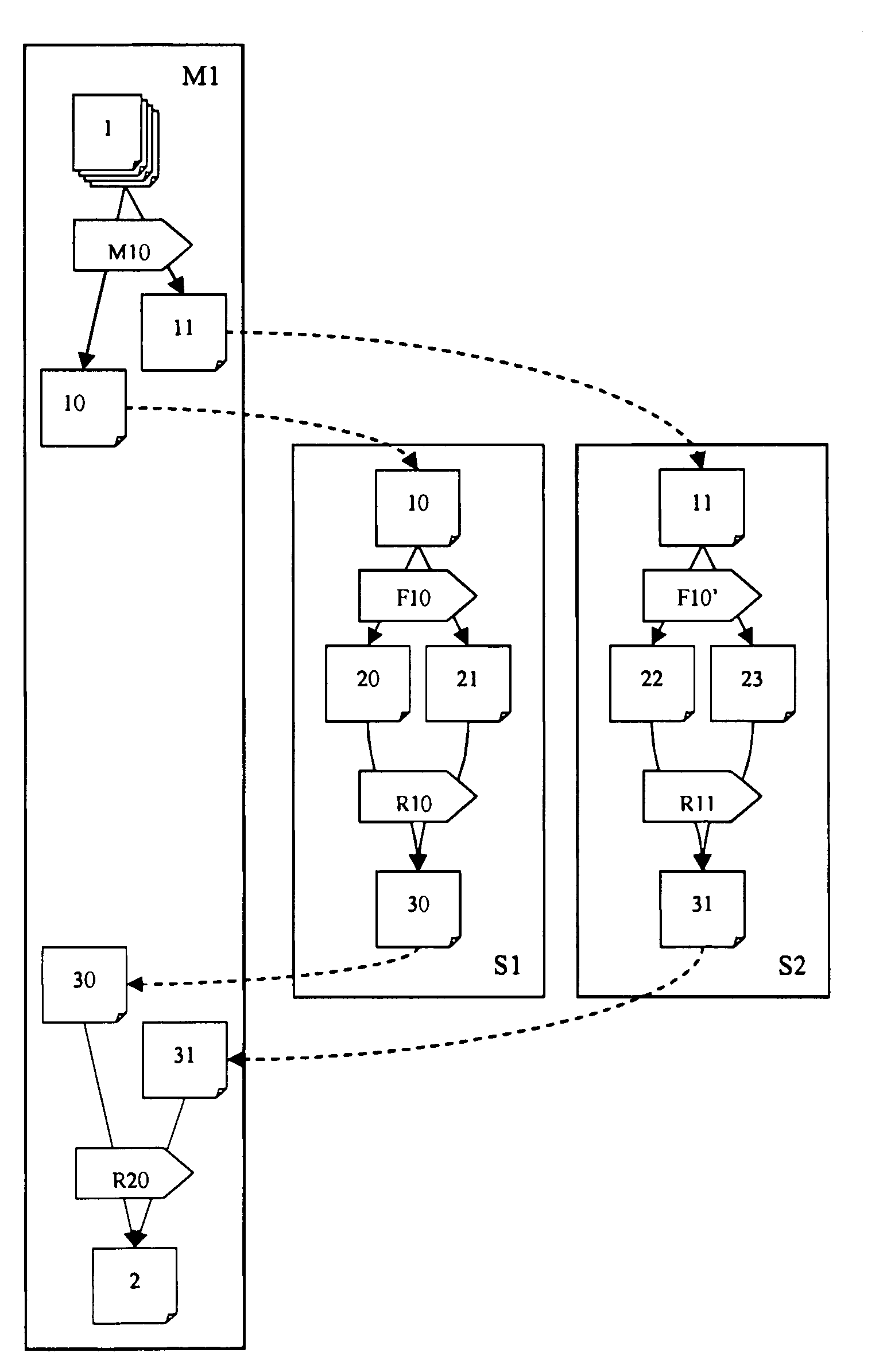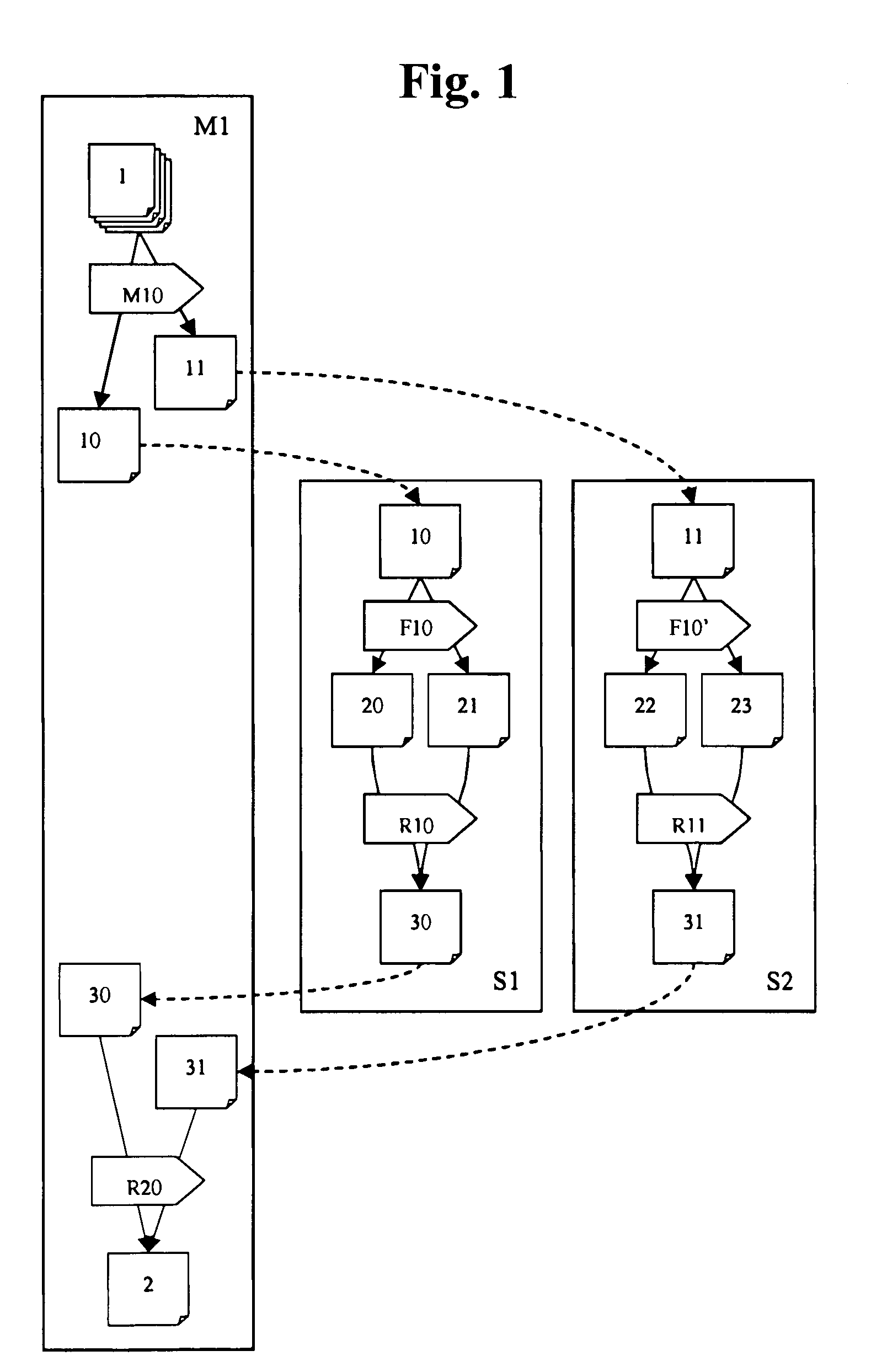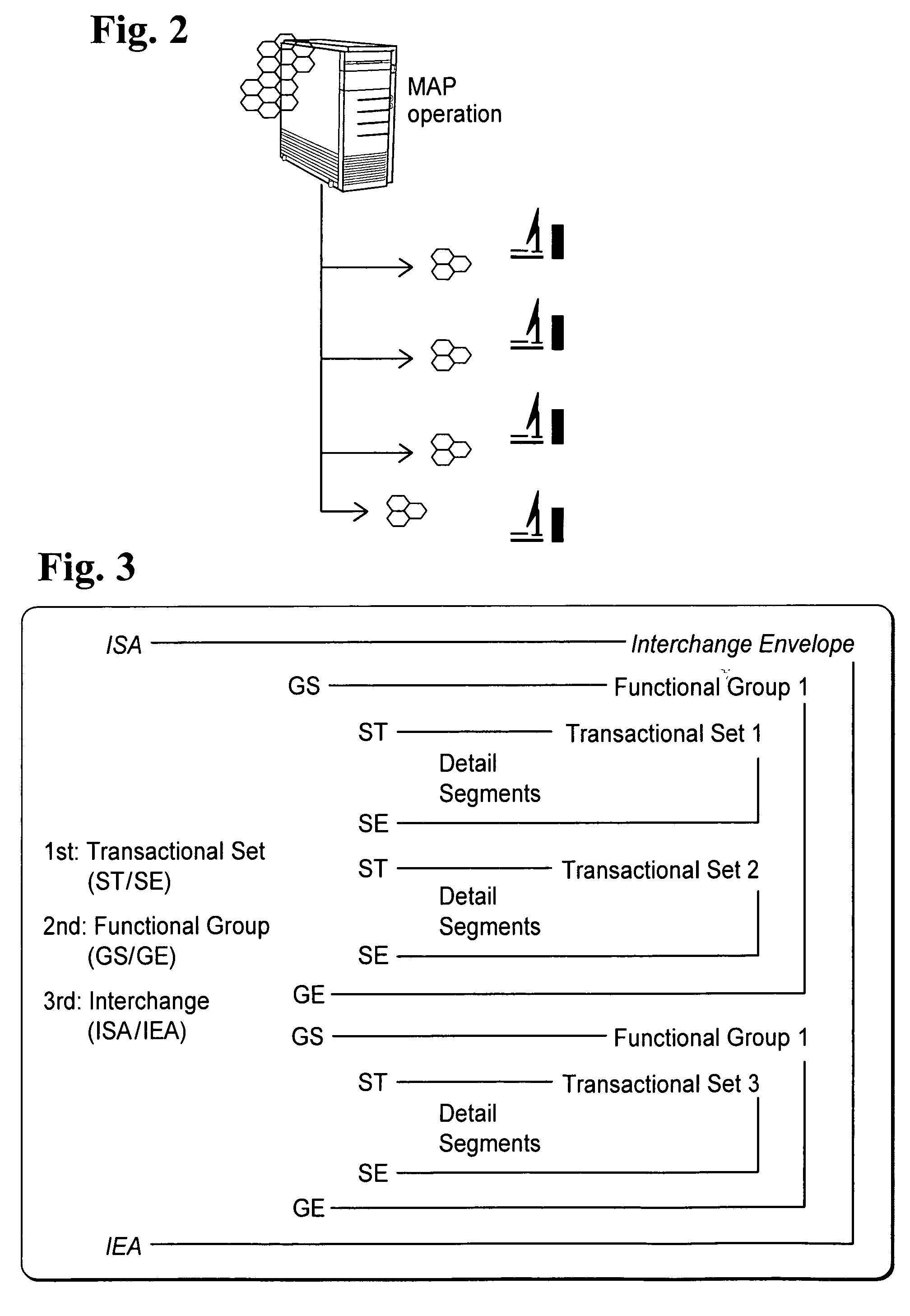Method and server cluster for map reducing flow services and large documents
a map and flow service technology, applied in the field of methods and, can solve the problems of high resource consumption, high processing cost, and high processing cost, and achieve the effects of reducing resource consumption, speeding up processing considerably, and speeding up delegation of tasks
- Summary
- Abstract
- Description
- Claims
- Application Information
AI Technical Summary
Benefits of technology
Problems solved by technology
Method used
Image
Examples
Embodiment Construction
[0048]In the following, a presently preferred embodiment of the invention is described with respect to the processing of a large EDI document by a server cluster according to the present invention. A server cluster, also referred to as a grid as schematically shown in FIG. 2, is a distributed computing platform which allows for parallel processing. It is typically composed of a cluster of networked, loosely coupled computers acting in concert to perform very large computing or data intensive tasks. It should be appreciated that processing an EDI document is only one of a wide variety of scenarios for the present invention and that any other types of documents may be processed. Furthermore, not only document processing may be advantageously achieved by the present invention, but any kind of complex computations, as will be demonstrated in further exemplary embodiments below.
[0049]The general structure of an EDI document is schematically depicted in FIG. 3, which shows the structure a...
PUM
 Login to View More
Login to View More Abstract
Description
Claims
Application Information
 Login to View More
Login to View More - R&D
- Intellectual Property
- Life Sciences
- Materials
- Tech Scout
- Unparalleled Data Quality
- Higher Quality Content
- 60% Fewer Hallucinations
Browse by: Latest US Patents, China's latest patents, Technical Efficacy Thesaurus, Application Domain, Technology Topic, Popular Technical Reports.
© 2025 PatSnap. All rights reserved.Legal|Privacy policy|Modern Slavery Act Transparency Statement|Sitemap|About US| Contact US: help@patsnap.com



